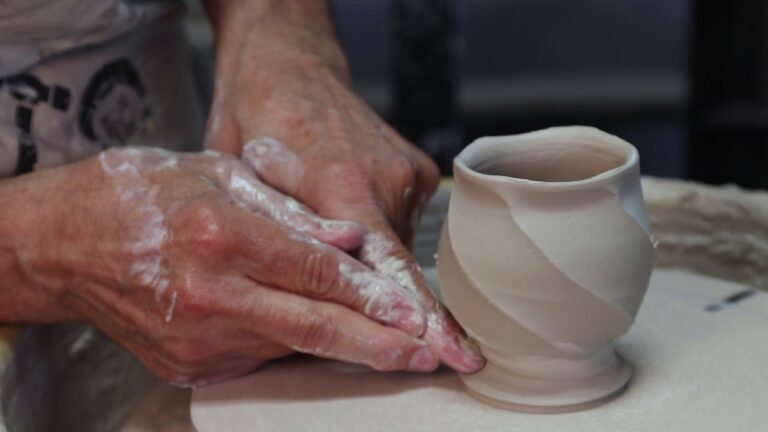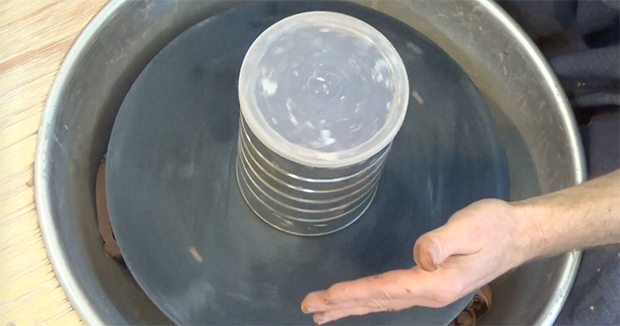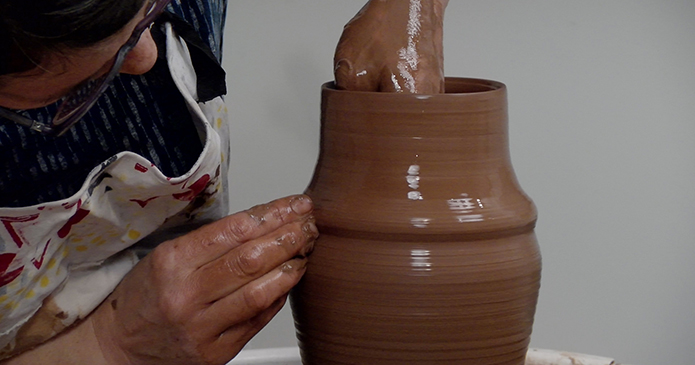
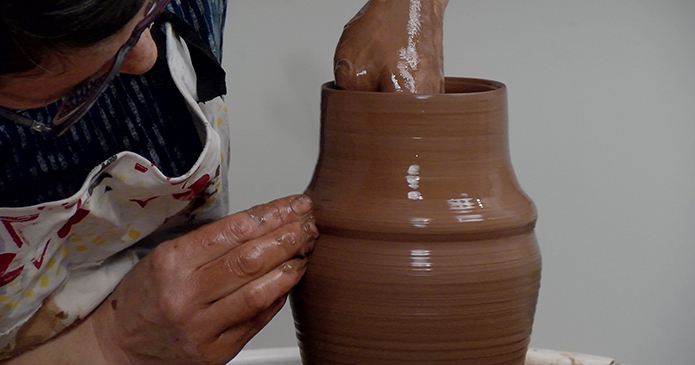
For most people who are new to throwing clay, an early goal is throwing large pots (that don’t weigh 40 pounds!). But it can be hard to figure out how to get clay from the base up into the walls, as well as how to add shape without having the whole thing collapse.
If you struggle with these problems, today’s video clip should help. In this clip, an excerpt from Martina Lantin’s video Extreme Alterations: Deconstructing and Decorating the Thrown Form, I’ve gathered three useful tips on throwing large pots to help you overcome obstacles that might be holding you back!
Preparing your Kneaded Clay for Throwing Large Pots
by Nic Collins
So your clay is now kneaded and de-aired and is the right consistency for throwing.
I have noticed during some of the teaching I have done that many potters who have been taught to throw using an electric wheel pay very little attention to the shape of the piece of clay they are about to use on the wheel. Sometimes it is almost a cube!
To help combat some of the problems of centering larger pieces of clay it makes sense to beat the clay into as uniform a cone shape as possible, before it goes onto the wheel. When I am starting to throw, much attention is given to the shape of the clay. See this post in the archives for tips on centering large amounts of clay!
Using a Removable Plywood Bat
 Of course when the pot is completed you will need to remove it from the wheel. I find that good-quality throwing bats works well. The hardwood plywood that almost all local builder’s merchants supply is fine. Simply cut as many circular bats as you can from one sheet. I would recommend a thickness of 9–12mm (3/8 –1/2 in.), cut into 30–36cm (12 – 14in.) discs. Alternatively, you can easily buy ready made wooden bats if you prefer. Bats can be simply attached to the wheel head by throwing some clay into a flattened disc and with a throwing tool making concentric grooves in it. The wooden bat can then be placed in the centre and tapped down, creating a firm seal.
Of course when the pot is completed you will need to remove it from the wheel. I find that good-quality throwing bats works well. The hardwood plywood that almost all local builder’s merchants supply is fine. Simply cut as many circular bats as you can from one sheet. I would recommend a thickness of 9–12mm (3/8 –1/2 in.), cut into 30–36cm (12 – 14in.) discs. Alternatively, you can easily buy ready made wooden bats if you prefer. Bats can be simply attached to the wheel head by throwing some clay into a flattened disc and with a throwing tool making concentric grooves in it. The wooden bat can then be placed in the centre and tapped down, creating a firm seal.
If your wheel head has pins, you can attach a bat with corresponding holes by simply slotting it over these pins, which is much easier. However, although this method is very useful for removing a partly-thrown pot on its bat, which can then easily be put back on to the wheel already centered to continue throwing, it has a drawback in that when centering large amounts of clay the plywood bat can tend to lift off the pins. For this reason the disc of clay method, although slower, can often be better.
Don’t Use Your Fingertips When Throwing Large Pots
Too many potters have been taught to use the fingertips when throwing. I am proposing that you try using your knuckle or the heel of your hand. Throwing, using fingertips might be okay if you are only making small pots like mugs. Fingertip throwing with larger pots is not recommended. It will be very difficult to control the clay and will result in you not being able to lift the clay, and therefore a very uneven lift, and probably a wobbly rim. By using the knuckle of your right hand and applying pressure from the inside with the finger of the left hand, much more clay can be lifted in a more controlled way.
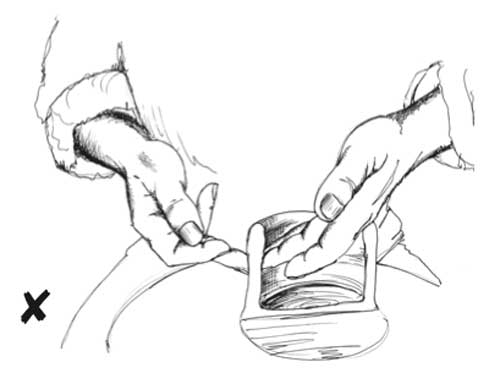
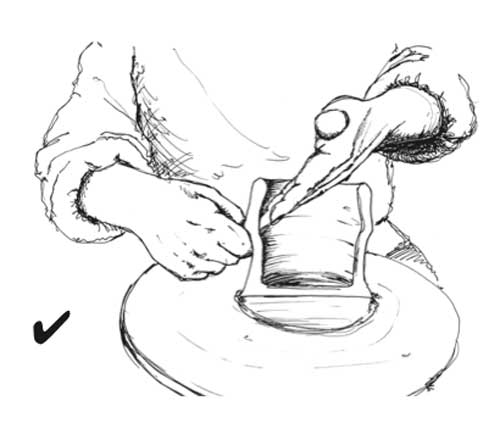

Lubrication of Clay When Throwing Large Pots
It is always very good practice not to use excessive amounts of water when throwing normally, because if too much water is used, the clay being worked on will become saturated and eventually collapse. As is the case with my momentum kick wheel, most wheels for making large wares will have no wheel tray. So it is good not to use much water, as if water spills onto the flywheel it will become rather messy and difficult to use.
When throwing large pots most of the work can be done using very little or indeed no water at all. Instead, use a softer clay rather than a harder one, and use a clay-slip lubrication rather than water. As you will see further into my book, most of the work will be done in the centering process by beating and shaping the clay without using any water. The large pot you are making will also be able to support more added clay more quickly, if you can use less water in the making process, as it will remain stronger and will not need so much time to dry and firm up again.




